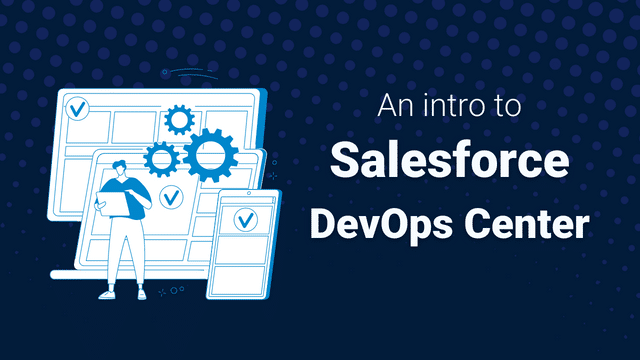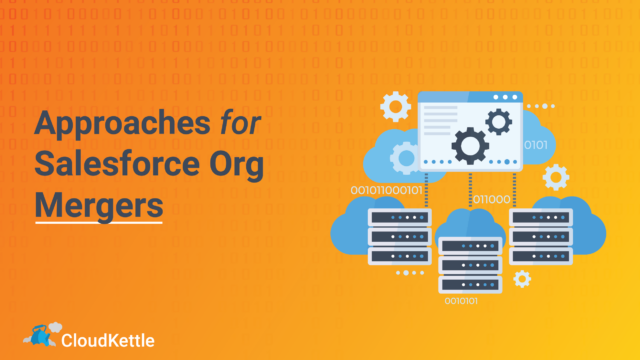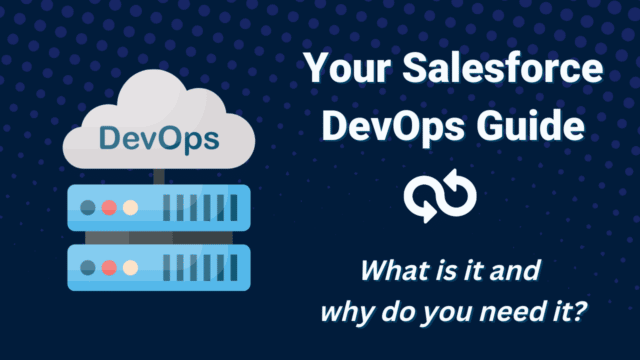A new Salesforce tool, its benefits, and its limitations
Moving changes from a sandbox to a production environment has always been a challenge for Salesforce practitioners. Over the past few years, Change Sets have been commonly used; however, they do not provide any way to track changes that have been made.
Recognizing that there is a gap in functionality, Salesforce has announced DevOps Center – a new product from Salesforce that makes the change and release management processes much easier to maintain. DevOps Center is designed to allow both Admins and Developers to work together. The easy-to-use and natively integrated interface makes the deployment process more flexible and reliable, keeps things in sync, and allows complex Salesforce Applications to deploy faster and more easily.
Why DevOps matters to Organizations
Companies are usually under enormous pressure while delivering requirements and deliverables. Time is of the essence, and efficiency and accuracy are key. DevOps Center brings improved synchronization between teams and across platforms to make the build and delivery of apps faster. Let’s talk about how it works.
Hybrid approach
As mentioned, DevOps Center is designed for fusion teams – Developers and Admins working together. Developers working on platforms like VS Code can push their changes to feature branches and create pull/merge requests in remote repositories. DevOps Center is capable of reflecting all those changes in UI on Salesforce instances, where Admins have visibility of those changes and they can review and deploy from DevOps Center. With DevOps Center, there is no need to use SFDX CLI to deploy changes that are being made via external tools. Everything can be maintained in a centralized place.
Features of Salesforce DevOps Center
- There is a single object called WorkItems for maintaining User Stories. The same object will be used to track and deploy changes to a sandbox or a production environment.
- Maintain Different Environments – Devs/Admins can now add as many environments as required, and also add and remove them from the project pipeline at their convenience.
- Source Control – DevOps Center currently only supports integration with GitHub, a source control system which enables version control. This process is seamless: you just authenticate in your GitHub account, select/create a repository, and you’re all set.
- Significant UI Improvement – Thanks to the newly designed UI of the DevOps Center, there is clear visibility into all changed metadata components with the modified date and other information in every WorkItem record. There is also clarity on the current and upcoming stages of WorkItem. Thanks to all these UI improvements, Users can now simply click to deploy their changes.
What are the Benefits of Salesforce DevOps Center?
- Quality & Quantitative improvements in deployments
- Monitoring and Source Control capabilities
- Robust Metadata Management
- Better Collaboration among teams
- No additional cost for Enterprise, Performance, Professional, Unlimited, and Developer Edition
Current Limitations of Salesforce DevOps Center & Other Considerations
- Version Control System is mandatory and the only supported provider is Github. (Bitbucket, Azure & Gitlab will be available in the near future, but no firm dates yet)
- The DevOps Center is only supported in the Lightning environment, not in the classic environment
- It cannot be installed and configured in the Sandbox environment but is possible to use with Scratch Orgs
- Integration with Ticketing Systems like Jira/Azure is not yet possible
- It doesn’t have pre-configured CI/CD for automated deployment and testing, so deployment has to be triggered manually
- No visibility of the same metadata in different environments under WorkItems, which may lead to difficulty resolving conflict errors in GitHub. (The same limitation exists in Change Sets, but it will simply overwrite the metadata without raising a conflict.)
- Future of Change Sets
- No further enhancement happening to Change Sets
- Possible retirement in future
Alternatives of DevOps Center
Two names that always come up when discussing DevOps for Salesforce are Gearset & Copado. Both are well-matured and cover a range of use cases to accommodate all requirements. Below are capabilities that both of these tools have, but which the Salesforce DevOps Center is not yet offering:
- Backup and Rollback change
- Built-in setup for CI/CD for automated deployment and testing
- Ticketing System Integration
- Compare metadata of 2 or more orgs
- Cherry picking deployments
- Data migration between orgs
- All Git providers are supported
- Multi-cloud support (vlocity, CPQ, B2B Commerce etc.)
Other DevOps Center alternatives include AutoRABIT, Flosum, Blue Canvas, and Opsera.
What’s Next?
There are still some questions, especially as many important features are still missing in the Salesforce DevOps Center, but a tentative Roadmap for DevOps Center has already been released by Salesforce. The decision on whether DevOps Center is right for you will come down to your own organization’s plans and needs, but Salesforce DevOps Center is a massive upgrade from the Change Sets and a definite step in the right direction.
Want to set Salesforce DevOps Center up for yourself, but need a bit of guidance? Check out our Getting Started Guide!



